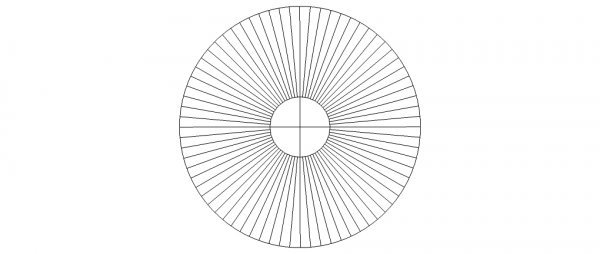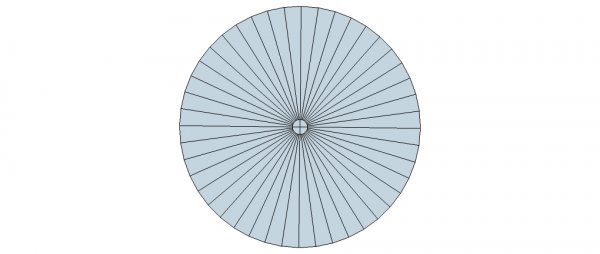I have a couple of lathes, including a Clausing 5914, a Southbend 13”, a Powercraft/Logan 10” & a 12” Craftsmen/Atlas Commercial lathe. Although I have the metric gears for the Clausing, I’m thinking of setting up the Craftsman lathe to be dedicated to cutting metric threads all the time. I think I want to try cutting these gears myself but need to buy the cutters. Does anybody out there no the correct gear set to buy, (pressure angle ect.)? Is there a gear selector chart for cutting metric threads for the Craftsman lathe? Thanks in advance, JB.
-
Welcome back Guest! Did you know you can mentor other members here at H-M? If not, please check out our Relaunch of Hobby Machinist Mentoring Program!
You are using an out of date browser. It may not display this or other websites correctly.
You should upgrade or use an alternative browser.
You should upgrade or use an alternative browser.
Craftsman/Atlas Commercial lathe gear cutters
- Thread starter songbird
- Start date
- Joined
- Jun 29, 2014
- Messages
- 4,170
This may get be helpful in your research, but do not know if this applies specifically to your Craftsman.
Metric Thread Cutting for Atlas Lathes
Metric Thread Cutting for Atlas Lathes
Thanks Rob.The gears are 16db 14.5 degrees.
- Joined
- Feb 13, 2017
- Messages
- 2,138
Just how "accurate" you need the "precision" to be is your own call. I can't make that decision for you. I have run across several web sites over the years that allow cutting "almost" metric threads on a Craftsman 12" machine. Mine is a 101.27440, a 12 x 36 Atlas built machine dating to the mid 50s, m/l.....
By "almost" metric, I am referring to the inaccuracy, in most cases a small number in the fourth or fifth decimal place. That would allow a metric nut, for example, to be 12mm thick and run a 6mm threaded rod freehanded. The most accurate I have seen involves using stock gears to get an almost match.
The article listed above uses this method. There is another determined by a South African fellow that allows a fairly quick swap back and forth. In the 30 second region..... I don't have a link specificaly for this article but I did find a similar one at http://www.conradhoffman.com/metricthreading.htm. Perhaps a little research into Atlas or older Craftsman machines would turn up further conversions.
True metric conversion on a machine with an imperial leadscrew will involve a 127 tooth gear. 25.4 x 5 to get the decimal out of the equation. With a 16 DP gear of 127 teeth, we're talking a hefty modification to the back of the headstock. The gear train..... I don't have room on my machine without some heavy modification. In essence, a 1mm pitch equates to 25.4 TPI. If you can get 25.35 TPI or 25.45 TPI, that's pretty close enough for most applications. Again, just how close is up to you.
By "almost" metric, I am referring to the inaccuracy, in most cases a small number in the fourth or fifth decimal place. That would allow a metric nut, for example, to be 12mm thick and run a 6mm threaded rod freehanded. The most accurate I have seen involves using stock gears to get an almost match.
The article listed above uses this method. There is another determined by a South African fellow that allows a fairly quick swap back and forth. In the 30 second region..... I don't have a link specificaly for this article but I did find a similar one at http://www.conradhoffman.com/metricthreading.htm. Perhaps a little research into Atlas or older Craftsman machines would turn up further conversions.
True metric conversion on a machine with an imperial leadscrew will involve a 127 tooth gear. 25.4 x 5 to get the decimal out of the equation. With a 16 DP gear of 127 teeth, we're talking a hefty modification to the back of the headstock. The gear train..... I don't have room on my machine without some heavy modification. In essence, a 1mm pitch equates to 25.4 TPI. If you can get 25.35 TPI or 25.45 TPI, that's pretty close enough for most applications. Again, just how close is up to you.
Bill Hudson
- Joined
- Oct 31, 2016
- Messages
- 2,718
I did a thread on this. https://www.hobby-machinist.com/thr...-qcgb-on-a-craftsman-12x36.52915/#post-441419 Another good source of information for odd threads is the QCGB setup manual. One thread that I am going to need to cut is 1.8mm which happens to be 14.11 tpi. I could not find 1.8mm anywhere but 14.11 tpi is in the QCGB setup manual. If you have an odd metric thread and can't find the gearing for it look for it's tpi equivalent.
Attachments
- Joined
- Jun 7, 2013
- Messages
- 10,443
The fact is that a 127 tooth gear cannot be cut with an ordinary dividing head, it takes the capability of differential indexing to accomplish; the spindle rotation is transmitted by a gear train to also rotate the index plates while the worm crank is being rotated; having said that, I think the Cincinnati dividing head, when equipped with a special "high number plate" with 127 holes (40 holes on the 127 hole plate) is able to preform the task, this being possible because Cincinnati uses such large diameter dividing plates, the smaller B&S plates don't have enough diameter to drill that many holes.
- Joined
- Oct 31, 2016
- Messages
- 2,718
With google sketchup you can easily divide a circle into any number of equally spaced lines. You can have an odd or even number of lines. Here is a circle I divided into 72

and a circle divided into 44

I could do a 127 in about 5 to 10 minutes. The above circles were drawn 8" in diameter. You could enlarge or shrink the circle when you print it out. Changing the size won't affect the equally spaced lines.
Print it out and glue/tape it to one of your dividing plates. You should be good to go.

and a circle divided into 44

I could do a 127 in about 5 to 10 minutes. The above circles were drawn 8" in diameter. You could enlarge or shrink the circle when you print it out. Changing the size won't affect the equally spaced lines.
Print it out and glue/tape it to one of your dividing plates. You should be good to go.
- Joined
- Jun 7, 2013
- Messages
- 10,443
Not having holes, it would be pretty sketchy, and if holes are drilled, they need to be all at nearly exactly the same radius in order for the pin to engage each hole (easily). Also, sector arms are needed to count holes (or lines); one little error in counting holes or lines means that the project is spoiled.
